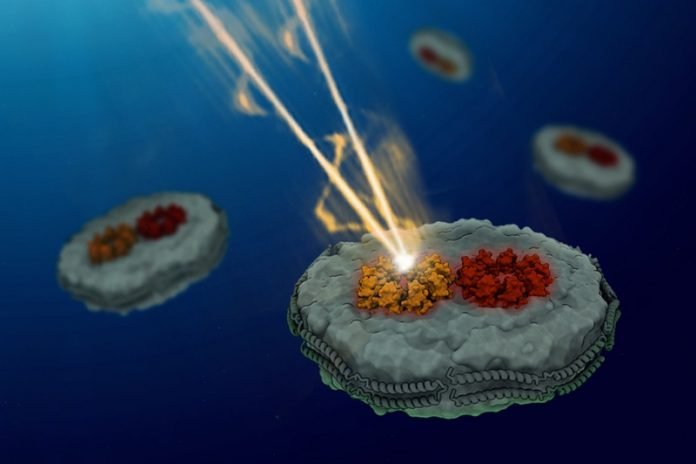
Scientists at the Massachusetts Institute of Technology (MIT) have made an intriguing discovery about photosynthesis, the process through which plants and some bacteria convert sunlight into food.
The team, led by chemistry professor Gabriela Schlau-Cohen, discovered that the messy arrangement of certain proteins actually improves the efficiency of energy transfer.
The findings, shared in a new study, are shining light on the world inside a cell.
Photosynthesis is like a little solar panel inside a cell. Light from the sun is caught by proteins in the cell, called the light-harvesting complex, or the ‘antenna.’
This light is made up of tiny packets of energy called photons. These photons jump around between the proteins until they reach a part of the cell called the reaction center.
Here, the energy is turned into electrons, which the cell uses to create sugar molecules – its food.
The really impressive part is that nearly every photon of light that the cell catches gets turned into an electron.
It’s like if you used almost every bit of your phone battery without wasting any power. Scientists call this ‘near-unity quantum efficiency.’
But how do the proteins in the antenna do this? That’s what the MIT team wanted to find out. They studied a type of bacteria that uses photosynthesis, called purple bacteria. They created tiny synthetic membranes that mimic the environment of a cell, then placed proteins from the bacteria inside.
They found something surprising: the energy transfer was more efficient when the proteins were randomly arranged. This was faster than when the proteins were neatly lined up. The faster the energy can get converted, the less gets lost along the way, and the more efficient the whole process is.
In other words, when it comes to energy transfer in photosynthesis, being disordered is actually better. The finding suggests that cells may have evolved to be messy for a reason – it helps them use energy more efficiently.
The team is now planning to explore other proteins and how energy moves between them. They also want to study photosynthesis in different organisms, like green plants. Understanding these tiny, fast-paced processes could lead to better understanding of how life on Earth harnesses the sun’s energy.
This work was mainly funded by the U.S. Department of Energy. So the next time you see a messy room, remember, it might just be nature’s way of being efficient!
Follow us on Twitter for more articles about this topic.



